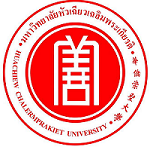Please use this identifier to cite or link to this item:
https://has.hcu.ac.th/jspui/handle/123456789/3402Full metadata record
| DC Field | Value | Language |
|---|---|---|
| dc.contributor.author | Nattanun Siricharoen | - |
| dc.contributor.author | ณัฐนันท์ ศิริเจริญ | - |
| dc.contributor.other | Huachiew Chalermprakiet University. Faculty of Communication Arts | en |
| dc.date.accessioned | 2024-12-26T14:44:42Z | - |
| dc.date.available | 2024-12-26T14:44:42Z | - |
| dc.date.issued | 2017 | - |
| dc.identifier.citation | Silpakorn University Journal of Social Sciences, Humanities, and Arts Vol.17(3): 155-192, 2017 | en |
| dc.identifier.uri | https://has.hcu.ac.th/jspui/handle/123456789/3402 | - |
| dc.description | สามารถเข้าถึงบทความฉบับเต็ม (Full text) ได้ที่ : https://www.thaiscience.info/Journals/Article/SUIJ/10988636.pdf | en |
| dc.description.abstract | The major objective of this research was to propose a model for the practical application of new media for health communication via Smartphone that would allow university students to help promote the well-being of elderly family members. The sample population was 400 first-year students enrolled at Huachiew Chalermprakiet University in the first semester of 2016 in 13 study programs covering 4 core subject groups, who were surveyed by questionnaire, as well as 13 representative students who participated in focus group discussions and 14 qualified experts who were consulted for opinions and recommendations. Data were analyzed using the descriptive statistics of frequency, percentage, mean, and standard deviation and the inferential statistics of Chi-square, Independent Samples T-Test and One-Way ANOVA. Data were collected from January to October 2016. The results showed that most of the students wanted to use a form of communication by Smartphone that enabled both parties to see each other’s faces and hear each other’s voices in order to sure that health communication information was transmitted clearly and could be understood clearly. Hypothesis testing revealed that there were differences between males and females in their new media use behavior, regular activities, attitudes about health information, ways of transmitting health care information, and attitudes toward the use of new media to help promote the physical and emotional health of the elderly. The main conclusions from the experts were that 1) students required advice from their university instructors. and 2) The content, media and method of transmitting messages about health should be compatible with the way of life and desired benefits of the elderly if they are to be effective in helping the older people adjust their attitudes or behavior | en |
| dc.language.iso | en_US | en |
| dc.subject | Communication in medicine | en |
| dc.subject | การสื่อสารทางการแพทย์ | en |
| dc.subject | Older people -- Thailand | en |
| dc.subject | ผู้สูงอายุ -- ไทย | en |
| dc.subject | Well-being | en |
| dc.subject | สุขภาวะ | en |
| dc.subject | Health promotion | en |
| dc.subject | การส่งเสริมสุขภาพ | en |
| dc.subject | Smartphones | en |
| dc.subject | สมาร์ตโฟน | en |
| dc.subject | Social media in medicine | en |
| dc.subject | สื่อสังคมออนไลน์ในการแพทย์ | en |
| dc.title | Health Communication to Promote the Well-Being for the Thai elderly with New Media via Smartphone by Undergraduate Students | en |
| dc.type | Article | en |
| Appears in Collections: | Communication Arts - Articles Journals | |
Files in This Item:
| File | Description | Size | Format | |
|---|---|---|---|---|
| Health-Communication-to-Promote-the-Well-Being-for-the-Thai-elderly.pdf | 59.83 kB | Adobe PDF | View/Open |
Items in DSpace are protected by copyright, with all rights reserved, unless otherwise indicated.
